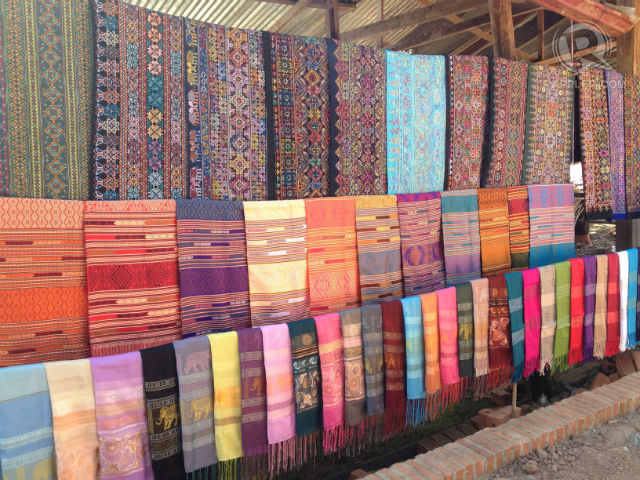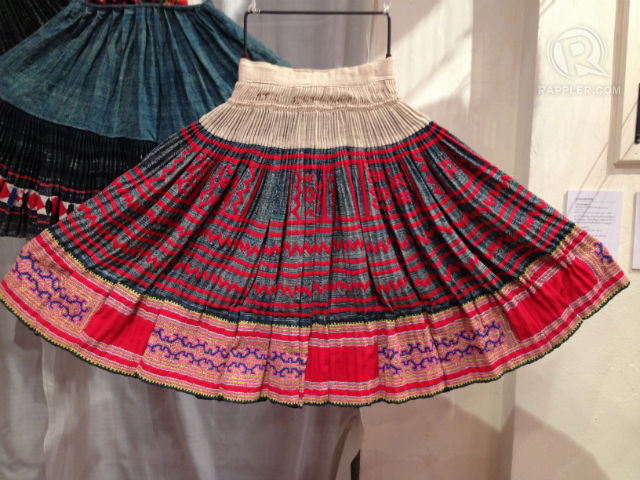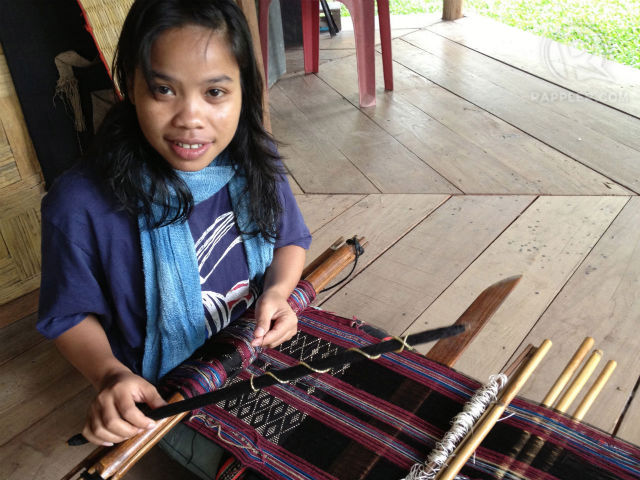SUMMARY
This is AI generated summarization, which may have errors. For context, always refer to the full article.

LUANG PRABANG, Laos – With its dusty streets, ancient temples and beautiful vistas, the city of Luang Prabang in Laos has become a magnet for tourists. Even before Luang Prabang was declared a UNESCO World Heritage site in 1995, the former capital drew its share of travellers.
Today, you’ll find budget backpackers and well-heeled tourists walking leisurely down the small roads lined with cafes and colonial shop houses.
For some visitors to Laos, the attraction is permanent.
Joanna Smith, a photographer from the United Kingdom, has lived in Laos for 13 years. Joanna met Lao weaver Veomanee Duangdala in 1999 while studying weaving techniques.
Veo was a very creative weaver who liked making unique designs for her skirts. Together they founded Ock Pop Tok, a textile design and weaving company based in Luang Prabang.
“Our original concept was to bring people together through textiles to exchange knowledge and ideas. We decided to set up a textile gallery [where] we would weave things. It really started as a very creative, fun project,” said Joanne (or Jo) of the birth of Ock Pop Tok, which means “East meets West.”

Ock Pop Tok designs blend traditional Lao weaving techniques and patterns with modern aesthetics. Their prices are higher than what you would get for a silk scarf or sinh (a Lao version of the sarong) at the popular night market.
But Ock Pop Tok is also a social enterprise, using its profits to educate and empower female weavers, as well as keep the tradition of Lao weaving alive. Their mission to educate works in both ways.
Visitors to Ock Pop Tok’s living arts center can see up close the tedious work involved in producing a single sinh.

Conservation challenges
Laos is one of the least developed countries in the region, but it is also one of the most ethnically diverse. There are 49 officially recognized ethnic groups, but the actual number may be close to 100, according to unofficial estimates.
Its growing economy has created new opportunities for many of its poor citizens but it has also added new pressures. The influx of business investment from neighboring China and Thailand is drawing rural dwellers to urban areas. This, in turn, poises challenges for tribal communities to preserve their traditional ways of life.
Tara Gujadhur is the co-director of the Traditional Arts and Ethnology Centre (TAEC) in Luang Prabang, a museum dedicated to celebrating the Lao’s ethnic cultures. She’s observed that economic development is changing the Lao’s cultural landscape.
“What you find now is a lot of women no longer practicing their traditional arts, this is partly because they are going to school,” Tara said. “A lot of communities have been resettled by the government or are voluntarily resettling themselves because they want to be closer to roads, to schools, to health outposts, etc.”
Tara, an American who first came to Lao as a development worker, met Thongkhoun Soutthivilay, a collections manager at the Luang Prabang National Museum. The two women established TAEC in 2006 to document, interpret and revive Lao cultural traditions.
They have traveled to distant ethnic communities to document traditions and help residents preserve their tribal heritage. The museum recently celebrated its 5th anniversary.

Crossroads
TAEC volunteer Jacinta Brown, a conservator from Australia, believes Laos is at a crossroads in its history as it looks towards the future but does not want to throw away its past. “Laos is moving from the 16th to the 21st century in 40 years,” she remembers one Lao official saying at an ASEAN conference.
Jacinta worked with TAEC to conserve an heirloom wedding crown. The crown, though bought by the museum, is loaned back to the community it came from for use in ceremonies. This is one way of keeping traditions in communities alive despite increasing pressure to modernize, brought about by economic development.
Tara is optimistic about the future of Laos. “Culture is very much resilient,” she said. “We believe identity is expressed in many ways. Just because people aren’t wearing traditional clothing or not living in a traditional house doesn’t mean that they don’t still have a strong hold of their identity or cultural beliefs.
“There are a lot of modern adaptations of traditions. Their traditional clothing is no longer completely hand produced but it is still an evolution of that particular clothing.”

TAEC and Ock Pop Tok belong to a growing number of social enterprises that have sprouted in Laos.
They are driven by a passion for preserving the cultural diversity of Laos, but they are also grounded in the reality that even traditional culture evolves with the communities that own them.
Interestingly enough, many of these enterprises are partly owned by foreigners who have decided to call Laos their home. Their work will hopefully inspire more Lao people to take an interest in the preservation and advancement of Laos’ rich cultural heritage. – Rappler.com
Add a comment
How does this make you feel?
There are no comments yet. Add your comment to start the conversation.